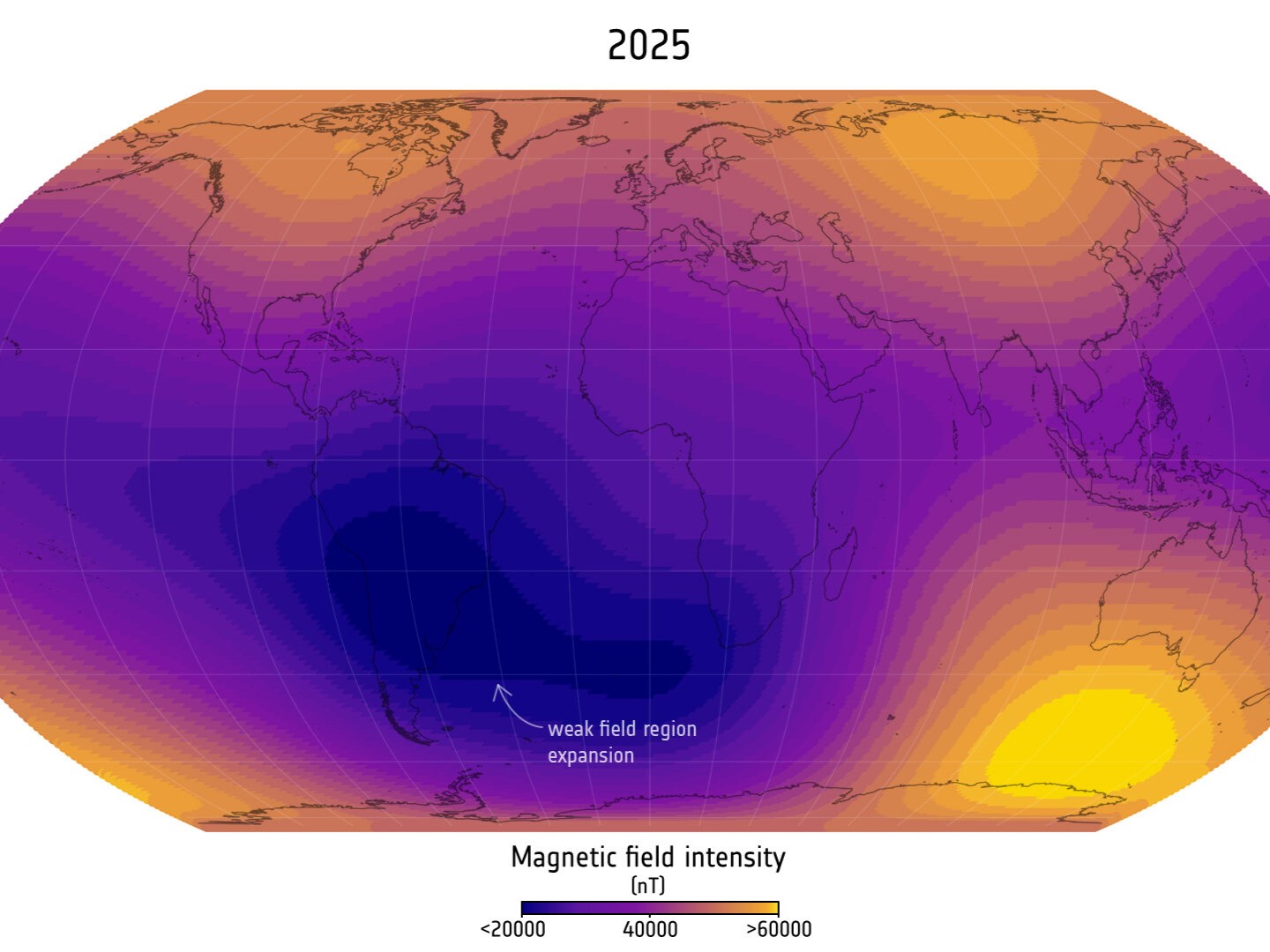The European Space Agency’s (ESA) Swarm satellite mission has identified a rapidly expanding anomaly in the Earth’s magnetic field. This anomaly, known as the South Atlantic Anomaly, has been observed to grow significantly, raising questions about its potential implications for satellite operations and other technology reliant on magnetic fields.
Swarm, launched in 2013, consists of three satellites working together to provide detailed measurements of the Earth’s magnetic field. According to ESA, the South Atlantic Anomaly is characterized by a noticeable decrease in magnetic intensity, which has increased in size and intensity over recent years. This phenomenon poses challenges for satellites orbiting the Earth, as they may experience increased radiation exposure when passing through this weakened magnetic region.
Impact on Technology and Research
The growing intensity of the South Atlantic Anomaly could affect numerous technologies, including satellite communications and navigation systems. ESA reports that the anomaly can disrupt operations and lead to data loss for satellites traversing the region. Increased radiation can damage onboard instruments, making it crucial for satellite operators to be aware of this phenomenon.
Moreover, researchers are keenly observing the implications of this anomaly for understanding the dynamics of the Earth’s magnetic field. The South Atlantic Anomaly has been shifting over the past few decades, and its recent expansion is seen as a significant indicator of changes within the Earth’s core. The data collected by the Swarm satellites will contribute to a better understanding of the underlying processes affecting the magnetic field.
Looking Ahead: Future Monitoring
ESA emphasizes the importance of continuous monitoring through the Swarm mission. The agency intends to utilize the mission’s findings to refine models of the Earth’s magnetic field and improve predictions of future changes. The Swarm satellites are expected to continue providing valuable insights into the behavior of the magnetic field, which is vital for both scientific research and practical applications.
As the South Atlantic Anomaly develops, scientists are focused on understanding its implications for both the environment and technology. The ongoing data collection from the Swarm mission highlights the importance of space-based observations in addressing critical questions about Earth’s magnetic field and its influence on modern life.
The ESA remains committed to advancing our understanding of these vital processes, ensuring that the knowledge gained will benefit both the scientific community and society as a whole.






































































